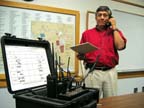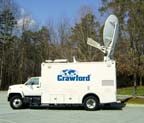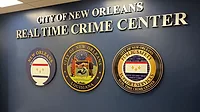Incident Reporting: Real-time Talk

A case in point is Pennsylvania State University (PSU). For nearly as long as Joe Paterno has been head coach, Penn State University’s police force has faced the complex task of managing up to 150,000 people and 30,000 vehicles.
Football to homeland security
Police Supervisor Lt. Clifford Lutz, a veteran of PSU’s police force for over 28 years, knows the gamut of these challenges, having provided security and logistics for Nittany Lion football games, and now responding to new homeland security directives.Although Penn State has 50 sworn officers and 200 auxiliary officers and guards, like any university in a small town or rural setting, it has to bring in resources from near and far to pull off major events of the magnitude that the university attracts.
This support generally comes from neighboring counties, colleges and public safety agencies. Although collaboration has been strong, the communications among these various teams hasn’t always been so. The problem, well known in the world of public safety, is that of radio interoperability, i.e., the incompatibility between the various radio equipment and frequencies used by different fire, police, emergency management, public safety and campus security departments.

In the university setting, this incompatibility creates an impasse that interferes with getting decisions implemented in the field in real time – whether for a minor incident or major crisis.
While PSU manages its own university communications with an 800 MHz trunked system that meets campus personnel needs, they still need to communicate with support coming from outside of Centre County, which includes a variety of agencies and departments from the Borough of State College, neighboring township police, Pennsylvania State Police and others throughout the region.
What Lutz found was the Incident Commanders’ Radio Interface (ICRI), a small black box about the size of a cocktail table book that would solve their interoperability needs. It comes from Communications-Applied Technology, Reston, Va.
“When we saw the ICRI, it seemed too good to be true. It turned out to be so simple; it was brilliant. No need for computer geeks to convert radio code to hexidecibel radio data streams or to program any computers,” said Lutz. The most complicated aspect of using the ICRI was turning it on and off and plugging in cables to mate the radio types that needed to be compatible. Toggle switches on the front are simply flipped to create or mute different talk groups.
Lutz described his learning curve: “We had a major event and received the ICRI a day before. We set it up and had it working in 10 minutes. Other agencies that were setting up their operations in the command post saw us talk with those in the field, which was something that had never been done before.”
Using the ICRI within PSU police unified command system allowed them to have both communications across chains of command and with people at the operational level. One of the biggest payoffs for large event management was instantly reducing the cycle and amount of time to make changes in the field. “The operational or incident commander can see something and change it in real-time, not 15 to 30 minutes or when a sergeant or corporal gets to the post to make the change,” said Lutz.
Lutz now uses the ICRI to create different talk groups to match up operational units that are assigned to the same task.
The ICRI interconnects essentially all types of portable and mobile radios, direct-connect and cell phones, and provides a telephone interface and command handset. By connecting a radio used by each agency or department to the ICRI, the communications could be grouped or mixed according to who needed to speak to whom.
In addition to event management, the ICRI fills a key role in homeland security and the university’s disaster and continuity of operations plan, creating interoperability with other mutual aid agencies and jurisdictions.
Sidebar: Assessing Radio Interoperability
“We looked at a lot of different vendors, talked to a lot different agencies and basically the prerequisite checklist came down to three critical issues,” said Pennsylvania State University Police Supervisor Lt. Clifford Lutz. “We’ve seen other agencies who bought very expensive, complex equipment that had lots of great capabilities but they all too often sit in a closet.”Among his advice: The equipment should not require special skills or training. He suggests security executives answer a number of crucial questions. How efficient is the equipment? Does it marry any radio operating system to another, whether that’s an 800 MHz trunked sytem, VHF, UHF, direct-connect type cell phone or regular telephone?
And about cost: Does the equipment do what it’s supposed to do? The reality is most departments don’t have $100,000, which is what some equipment costs. The ICRI at PSU was under $ 8,000.

Sidebar: Satellite Communication Trucks
Truck in the satellite dish when local communications break down.For example, Crawford & Company Catastrophe Services of Atlanta successfully tested one of its new satellite communication trucks when it was deployed to Pensacola, Fla., after Hurricane Dennis. The satellite provided a stable source of power and wireless communications to Crawford’s field units and adjusters.
The trucks facilitate voice/data transfer when infrastructure is compromised, which allows adjusters to begin processing claims immediately, no matter where the catastrophe strikes. Via satellite, the trucks provide 10 to 15 wireless voice lines and more than 250 wireless Internet connections. Each truck also powers a generator which to charge laptop computers, mobile phones and other business tools.

Sidebar: Video Goes Beyond Talk
Quick-setup video conferencing systems can play a role in incident reporting, situation briefings and disaster management. As more corporate security departments, law enforcement agencies and government operations bring in video conferencing and IP-based security video, the ability to bring together those separate entities grows easier.An example: Marconi, with a North American office in Kanata, Ontario, Canada, just introduced its ViPr Virtual Presence System. It can handle five-way video conference.
Looking for a reprint of this article?
From high-res PDFs to custom plaques, order your copy today!





